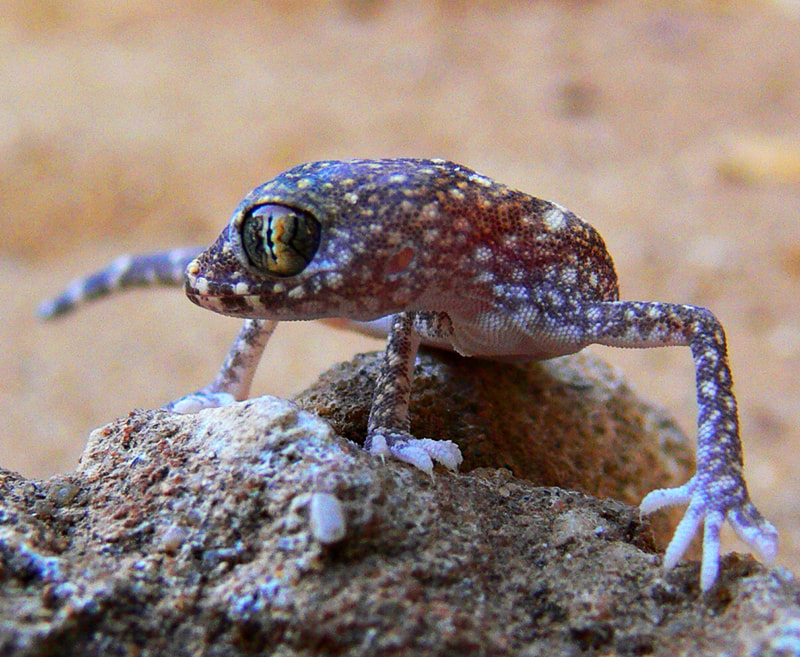About GARD
|
For a decade or so reptiles were the only terrestrial vertebrate class without known species-level global distributions. While regional data existed for some areas (e.g., Europe, USA and Canada) elsewhere (e.g., SE. Asia, much of Africa, N. South America) distributions were not comprehensively mapped.
GARD was formed to brings together biogeographers and herpetologists specializing on the reptile faunas of these uncharted areas to produce maps covering the distribution of all reptiles (~12,100 species as of mid 2024). These data allowed global reptile distribution to be known for the first time. |
The paper depicting the first complete draft of the GARD database with data on the distribution of ~99% of all reptiles (internally known as GARD 1.1) has been published in Nature Ecology & Evolution (on October 9th, 2017). The second version (GARD 1.5) was used in Gumbs et al. 2020 (see "publications tab) and is now available upon request from Uri Roll and Shai Meiri. The third version (GARD 1.7) is the most recent and we used it (Caetano et al. 2022) to produce modelled IUCN assessments of Data Deficient and non-assessed species, and identify potential problematic assesments, using machine-learning algorithms.
We are currently working on updating and further improving the distribution data (creating GARD 2.0): Far from stopping there we are now expanding the working group (see "people"), and improve the maps, and associated trait data for reptiles as a whole. To this end we are manually reproducing all maps, making sure point occurences match polygonal maps, and having regional experts vet each and every distribution map. As you can guess, it takes time...
We are currently working on updating and further improving the distribution data (creating GARD 2.0): Far from stopping there we are now expanding the working group (see "people"), and improve the maps, and associated trait data for reptiles as a whole. To this end we are manually reproducing all maps, making sure point occurences match polygonal maps, and having regional experts vet each and every distribution map. As you can guess, it takes time...
These data will be used to address the following questions:
We model reptile distribution with future climate change and land use projections to identify possible benefactors on the one hand and species that are likely to be facing greater risks of extinction on the other.
- Correlates of species richness (historical correlates / environmental correlates): Can we predict distribution from diversification - historical components rather than current-day climate? - could, say, geckos be rich in places that have a long history of having rock escarpments (e.g., the Kimberley and Pilbara)?
- Are there different types of hotspots e.g., for rarity, richness and endemism?
- What is the cross taxon congruence - both between reptiles and other taxa and within reptiles: squamates and non-squamates, lizard and snakes, different saurian and ophidian families; fossorial taxa (Scolecophidia, Amphisbaenia & Dibamidae) etc.
- Identifying geographic centres of diversifications - where are the taxa that demark basal splits?
- Phylogenetic diversity and times of diversification: are they congruent in space, time and across lineages?
- Sampling - can we identify under-sampling from the distribution maps? Can we use them to examine where we may look for new species? Are there geo-political reasons why sampling is uneven and what are they?
- Mapping traits (e.g., body size, activity times, diets, life history, peritoneal pigmentation, reproductive effort etc.) – how traits evolve in relation to climate?
- Mapping functional diversity – does function differ between reptilian communities in different biomes?
- How will future distributions and richness patterns change following global warming?
- Range size (Rapoport's Rule): what is the spatial pattern in range size distributions?
- Species richness of species described in different years. Do hotspots move from the Holoarctic to the tropics? How many reptile species are there? How many are waiting to be described?
- Richness vs. human footprint – is there a connection?
The data will be further used to advance towards the IUCN’s global reptile assessment.
We model reptile distribution with future climate change and land use projections to identify possible benefactors on the one hand and species that are likely to be facing greater risks of extinction on the other.


